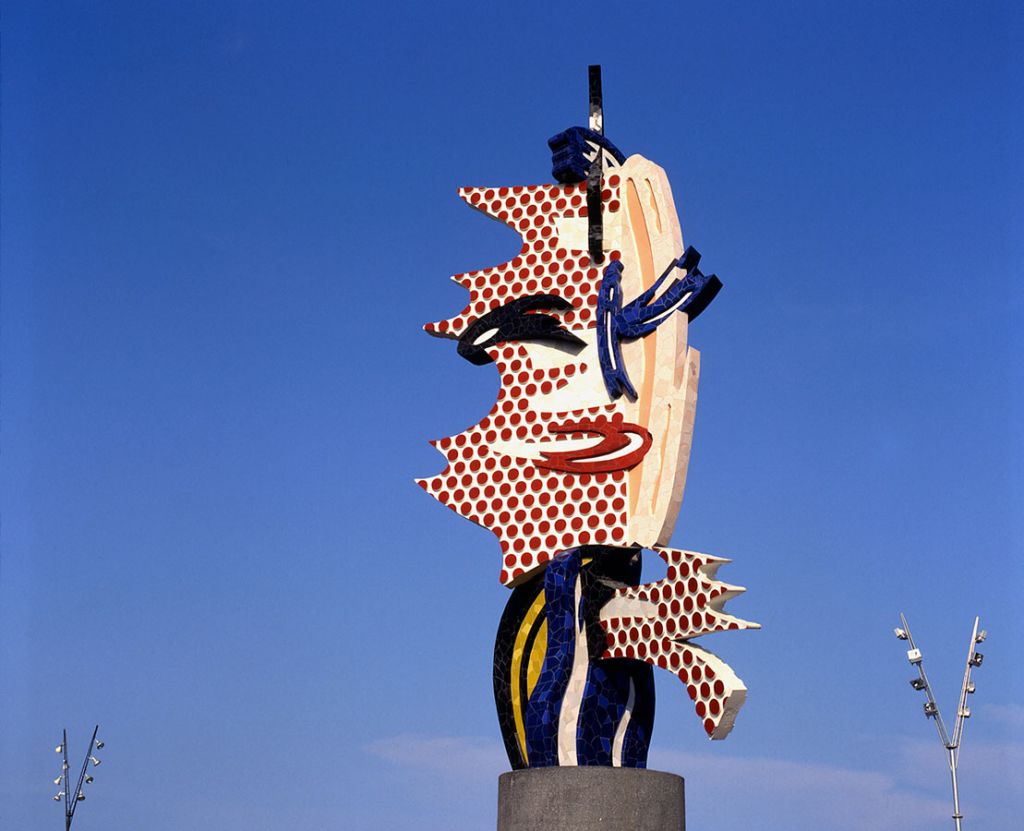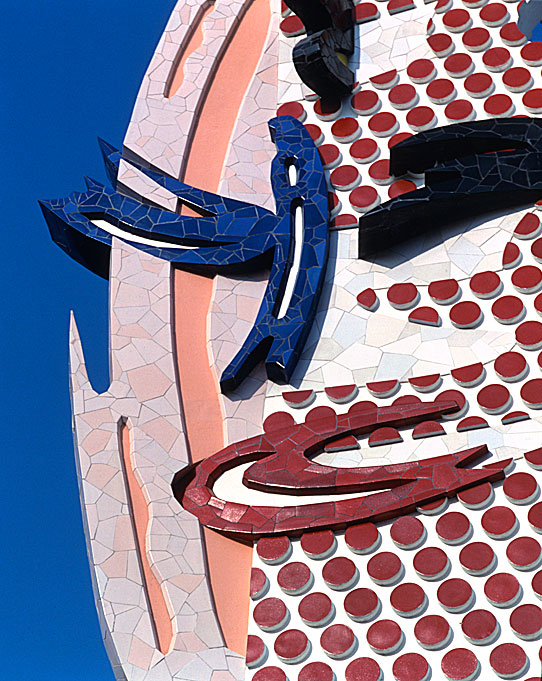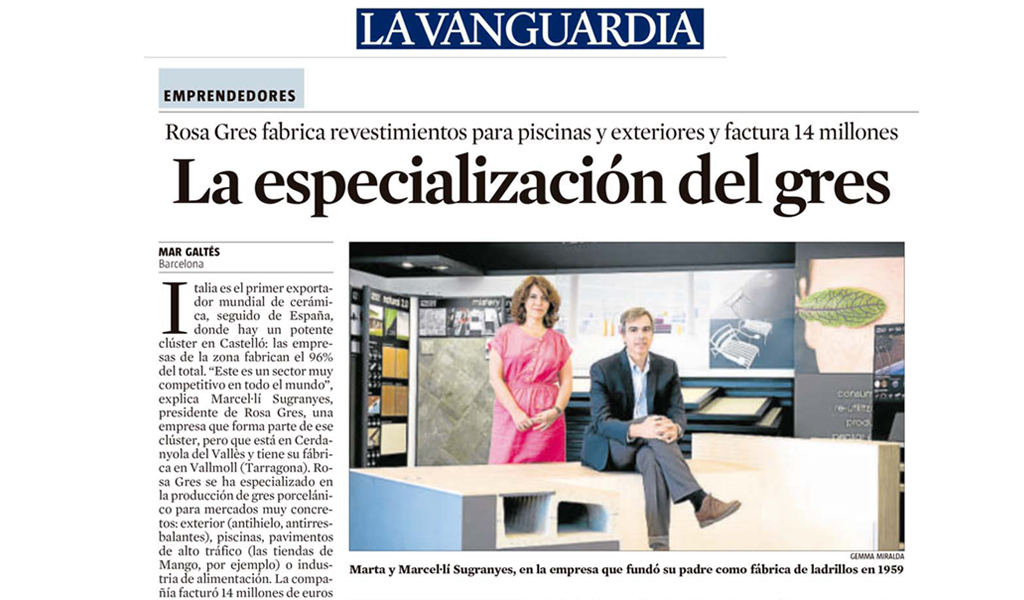Roy Lichtenstein’s Barcelona Head turns 30 this year
How Rosa Gres participated in the creation of this artistic project

In 1992, Barcelona danced to the lively beat of the Olympics. The city was transformed and opened up to the sea. A year before then, in 1991, the city hall had commissioned Roy Lichtenstein to design a sculptural project for the port of Barcelona. The artist proposed to create the sculpture Barcelona Head, which can be seen today on Passeig de Colón, in the Port Vell area, next to the Moll de la Fusta. The Face or Head of Barcelona is a visual attraction 15 m high and 6 m wide boasting a striking color combination that is not easily forgotten.
Barcelona Head is part of a series that Lichtenstein called Brushstrokes, i.e., a collection of brushstrokes he left in different cities around the world. The one in Barcelona represents a female face created in two dimensions. It’s a tribute to the city, to Modernisme and to the works of Gaudí. If we look at it in detail, we can see how trencadís mosaic pieces cover a large part of the sculpture. But Barcelona Head is above all a sample of the pop art style for which Lichtenstein’s artistic universe is best known. A brilliant ‘brushstroke’ of his art that is perfectly in tune with the multicultural spirit of the city.
In 1991 and with the project underway, IMPU, the urban planning team responsible for its construction, needed to source a number of materials with very specific features: very high resistance; bright, vibrant colors that wouldn’t alter over time, identical to those created by the artist; and that could be turned into special made-to-measure pieces. For example, the perfectly round spots with a diameter of 30 cm, or the rounded corner pieces, with 90º and 120º angles. It was at this point that Rosa Gres had the honor of being chosen to participate in the creation of this work of art. The sculpture has been in Barcelona’s Moll de la Fusta for 30 years now, as beautiful and spectacular as the first day. This reminds us once again of the high resistance and quality of our porcelain stoneware.
We started working on the project in February 1991. Roy Lichtenstein came to visit us for the first time to personally give us the samples of each color. Every color – red, yellow, blue, salmon, black and white – had several different shades. The challenge was to get every shade exactly right. A work of artistic precision on which the entire Rosa Gres team worked tirelessly. We had to apply every last ounce of our experience to make sure it would be perfect. And then came the key moment: the artist’s second visit to our factory. That was when we showed him the pieces and colors so that he could verify in person if they were just as he had conceived them. Roy Lichtenstein reviewed the material and happily gave us his approval. We did it! The project then went on full speed ahead until the final installation phase in September of the same year.
To make the dream of building Barcelona Head a reality, we put together a large and diverse team of professionals. We collaborated with the sculpture workshop of P. Fuste and the model makers of Maquet Barna. And to achieve the trencadís effect, we counted on the experience of the Feina workshop. The porcelain stoneware tiles were ‘broken’ by hand to then be put together to form the trencadís that covers the sculpture.

The project was a unique experience from the very first moment. Unforgettable. The opportunity to work with an artist like Roy Lichtenstein, the coordinated efforts of so many professionals and the sensation of having participated first-hand in an important moment of the city’s history through the construction of a work of art that remains unaltered to this day.
Happy 30th Anniversary, Barcelona Head!



